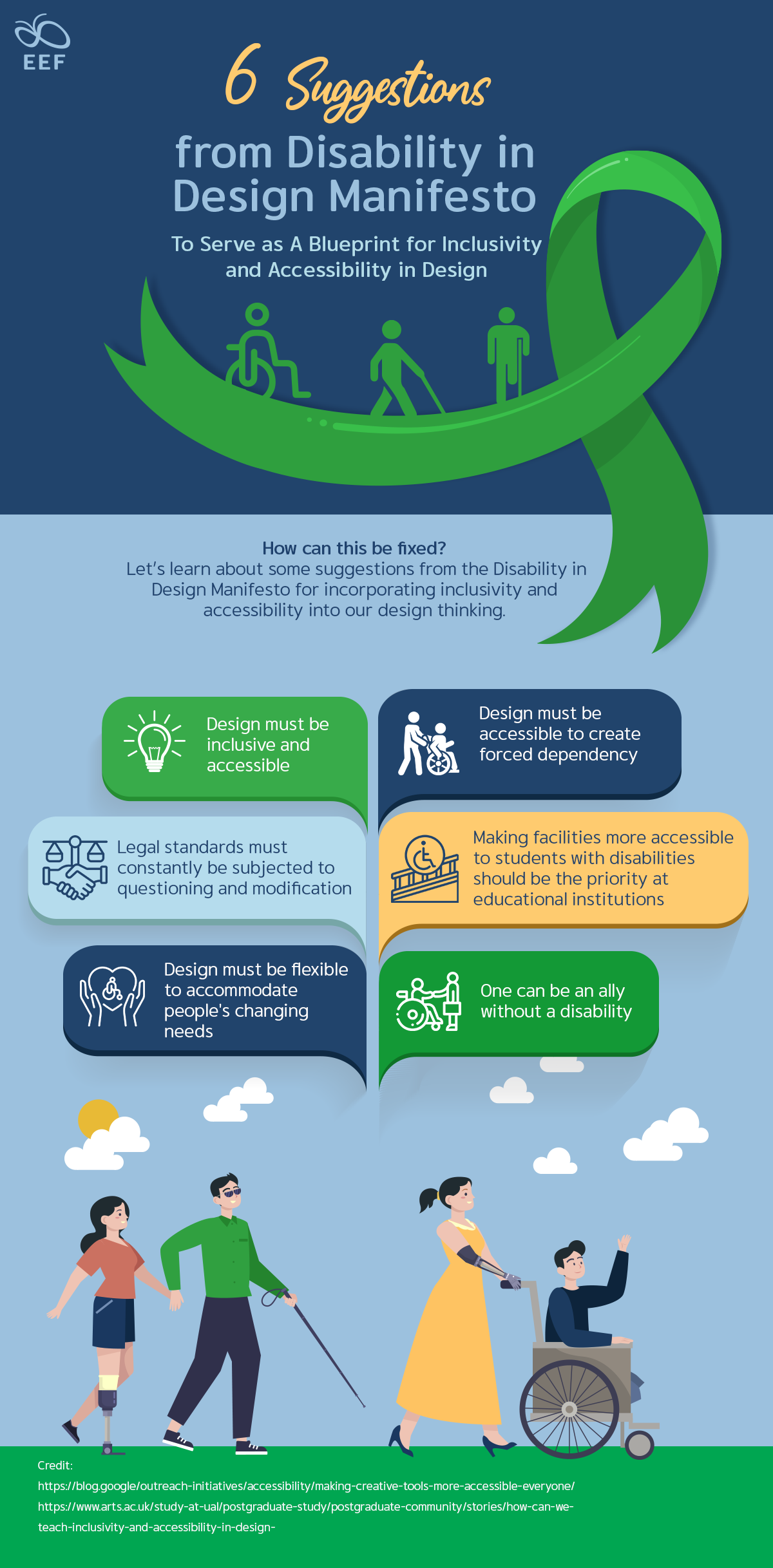6 Suggestions from Disability in Design Manifesto to Serve as A Blueprint for Inclusivity and Accessibility in Design
When designing something, the ones doing the designing should constantly put themselves in others’ shoes; They must strive to imagine and visualize how people live and use things to empower them to do so, for only by understanding people’s lives are they able to create in a way that makes peoples’ lives better. Unfortunately, more often than not our imagination fails to include disabilities. And designing education is no exception to all of this. How can this be fixed? Let’s learn about some suggestions from the Disability in Design Manifesto for incorporating inclusivity and accessibility into our design thinking.

Being aware of the limitations when it comes to visualizing how people with disabilities live and use things — much less empowering them —was “on the mend,” the U.K.’s only creative studio focusing solely on health awareness and equality. It offers bespoke events, workshops, and artworks to educate people on the societal impacts on health and well-being while also empowering those underrepresented by the current healthcare system. It received funding from the Post-Grad Community Fund for the creation of the concept project “Fonts with Feelings,” which aimed to enable the visually impaired to experience differences in fonts and their designs. However, as a team with no visual impairment, their understanding of their targeted audiences’ lives was dangerously limited. And it was the conversations with the UAL Disability Service and academics that brought them to the realization that this is not exclusive to them, and that our education should equip us better for this topic. Thus, came to be Disability in Design, a platform for identifying gaps in learning and subsequently teaching, and creating a manifesto to make inclusivity and accessibility an integral part of our design thinking.
Credit:

